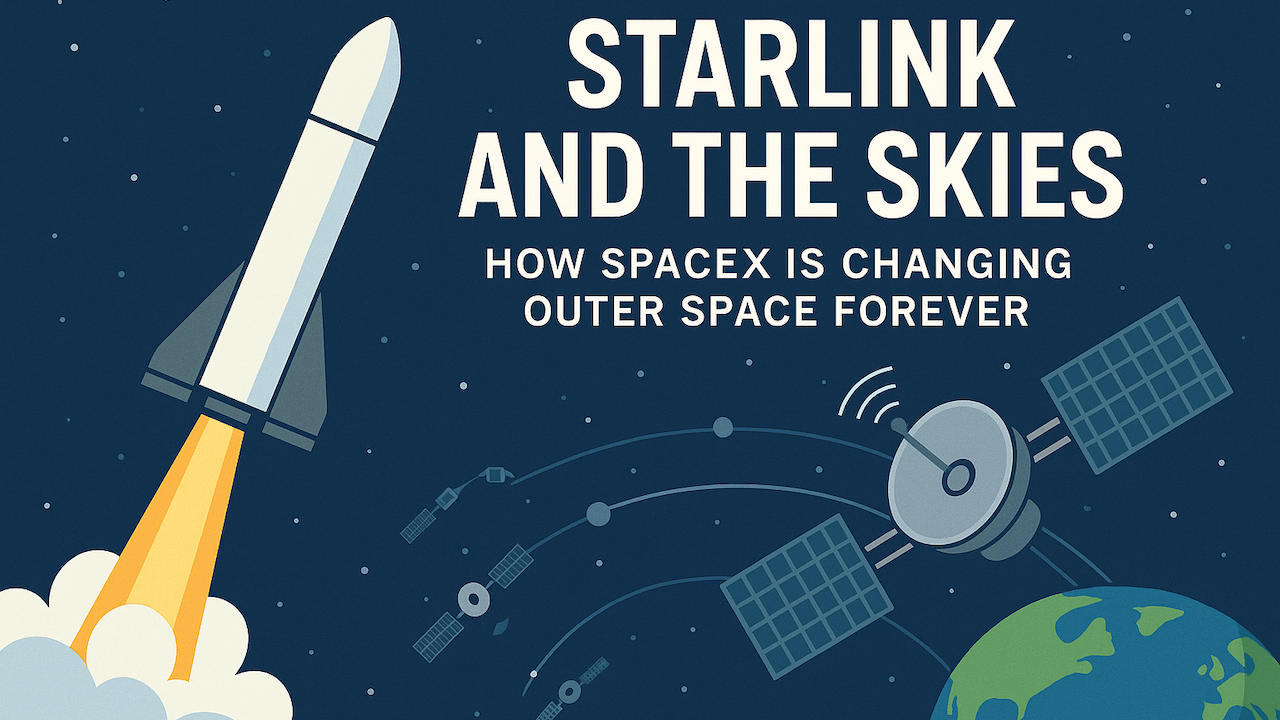Starlink and the Skies
How SpaceX is Changing Outer Space Forever
In recent years, SpaceX has been launching Starlink satellites at a pace that’s nothing short of historic. With thousands already in orbit – and thousands more planned – Starlink is building a massive constellation to deliver global internet coverage. This is high-tech, ambitious, and exciting. But it’s also sparking serious conversations about how we manage space. And I wonder, what the impact of filling outer space completely around the Earth will be?
🚀 So What Is Starlink?
Starlink is SpaceX’s plan to provide high-speed, low-latency internet anywhere on Earth by using a network of low-Earth orbit (LEO) satellites. So instead of relying on underground cables or tall towers, your signal would bounce from your device to space and back in milliseconds. This would enable the ability to have High-speed internet anywhere in the world that there is power! As of now, there are over 5,000 Starlink satellites in orbit—and counting. Since SpaceX is regularly launching batches of 20–60 satellites at a time, often multiple times per month, the numbers keep going up.
🌍 The Good: Global Connection
Because of a lack of a good Internet connection in so many places on earth, Starlink could be a game changer. And especially useful for:
- Rural and remote communities with no solid internet options
- Emergency situations where infrastructure is down
- Developing countries with limited digital access
- Areas that have state-sponsored censorship
It’s already proven useful in disaster zones and war-torn areas, helping people stay connected when all else fails. Also, in my travels, I have encountered government censorship of internet connections when there is political turmoil. Starlink would allow a user access to uncensored internet and a connection to the outside world.
🛰️ Starlink Concerns: A Crowded Sky
But as amazing as the tech is, there’s a flip side. What are the impacts on Space itself? Some popular concerns include:
- Orbital congestion: With thousands of satellites zooming around Earth, there’s a higher risk of collisions or interference with other satellites.
- Space debris: Dead or malfunctioning satellites can become dangerous space junk.
- Astronomy impacts: Starlink satellites reflect sunlight and can interfere with telescopes and long-exposure sky photography. Some astronomers say they’re “polluting the night sky.”
- Regulatory concerns: Who governs space traffic? Right now, it’s a bit of a free-for-all.
🌌 What This Means for the Future of Space
Starlink is forcing governments, scientists, and engineers to rethink how we manage orbital real estate. Some possible next steps:
- Better international cooperation on satellite tracking
- New technologies to make satellites less reflective
- Rules about satellite “deorbiting” at the end of life
- Space traffic control—yes, like air traffic, but for orbit
🔭 Final Thought
Starlink shows what private space companies can do when they move fast and think big. (And when they have a lot of money.) It’s opening doors for global connectivity but also raising deep questions about space stewardship. As we explore new frontiers, we’ll need innovation and responsibility—because space may be vast, but it’s not infinite. We can only hope that future generations are not impacted by our technological advances today. Let me know what you think in the comments.



